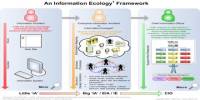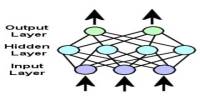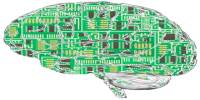For decades, doctors have used methylphenidate, a stimulant drug sold as Ritalin and Concerta, to treat children with attention deficit/hyperactivity disorder (ADHD), making it one of the most commonly prescribed treatments aimed at the central nervous system. Researchers might assume to know how methylphenidate works in the brain by now, yet nothing is known about the drug’s mechanism of action.
A recent study aims to bridge this knowledge gap by investigating how methylphenidate interacts with cognitive control networks and attentional behavior.
The new study appears in Biological Psychiatry: Cognitive Neuroscience and Neuroimaging, published by Elsevier.
What researchers do know is that persons with ADHD have lower dopamine signaling activity in the interconnected brain networks that control attention and goal-directed actions than neurotypical individuals.
Methylphenidate, in particular, is thought to alleviate ADHD symptoms by raising dopamine levels in the nucleus accumbens (NAc), a center for dopamine signaling.
The findings, which used the widely available technique of resting-state functional MRI, confirm the positive effects of methylphenidate on attention in children with ADHD and reveal the likely mechanism of action, through improved coordinated brain network activity and a likely key role for enhanced dopamine effects in the NAc region of the brain.
Cameron Carter
In the new study, researchers led by Yoshifumi Mizuno, MD, PhD, Weidong Cai, PhD, and Vinod Menon, PhD, used brain imaging to explore the effects of methylphenidate on the NAc and a so-called triple network system that plays a key role in behaviors that require adaptive control of attention.
The three networks include the salience, frontoparietal, and default mode networks. In children with ADHD, abnormal activity was observed in the NAc, various brain networks, implying that dysregulation in the system may underpin ADHD symptoms, and that addressing the malfunction may ameliorate such symptoms.
“Our findings demonstrate in two independent cohorts that methylphenidate changes spontaneous neural activity in reward and cognitive control systems in children with ADHD. Medication-induced changes in cognitive control networks result in more stable sustained attention. Our findings reveal a novel brain mechanism underlying methylphenidate treatment in ADHD and inform biomarker development for evaluating treatment outcomes,” noted Dr. Menon, Department of Psychiatry & Behavioral Sciences, Stanford University School of Medicine.
The researchers examined the effects of methylphenidate on spontaneous brain activity in 27 children with ADHD and 49 normally developing controls using functional magnetic resonance imaging (fMRI). Children with ADHD were scanned during two different visits one to six weeks apart once while receiving methylphenidate and once while receiving a placebo. (Typically developing children did not receive medication or placebo.)
Children with ADHD also completed a standardized activity to assess sustained attention outside of the scanner. The researchers also investigated the replicability of methylphenidate’s effects on spontaneous brain activity in a second independent cohort.
Unsurprisingly, when youngsters were medicated, they performed better on concentration challenges. When methylphenidate was delivered, the researchers observed increased spontaneous neuronal activity in the NAc, as well as the salience and default mode networks, as predicted.
With medication, children with ADHD who showed greater alterations in brain activity patterns in the default mode network fared better on attention activities.
The findings were repeated in two independent cohorts, adding to the evidence that methylphenidate may ameliorate ADHD symptoms through its activities on the NAc and the triple network cognitive system.
Cameron Carter, MD, editor of Biological Psychiatry: Cognitive Neuroscience and Neuroimaging, said of the study, “The findings, which used the widely available technique of resting-state functional MRI, confirm the positive effects of methylphenidate on attention in children with ADHD and reveal the likely mechanism of action, through improved coordinated brain network activity and a likely key role for enhanced dopamine effects in the NAc region of the brain.”
The findings help researchers better understand how ADHD affects cognitive control networks in the brain and how methylphenidate interacts with these networks to change behavior. The findings could help guide future research into brain imaging as a therapeutically meaningful biomarker of therapy response.
















